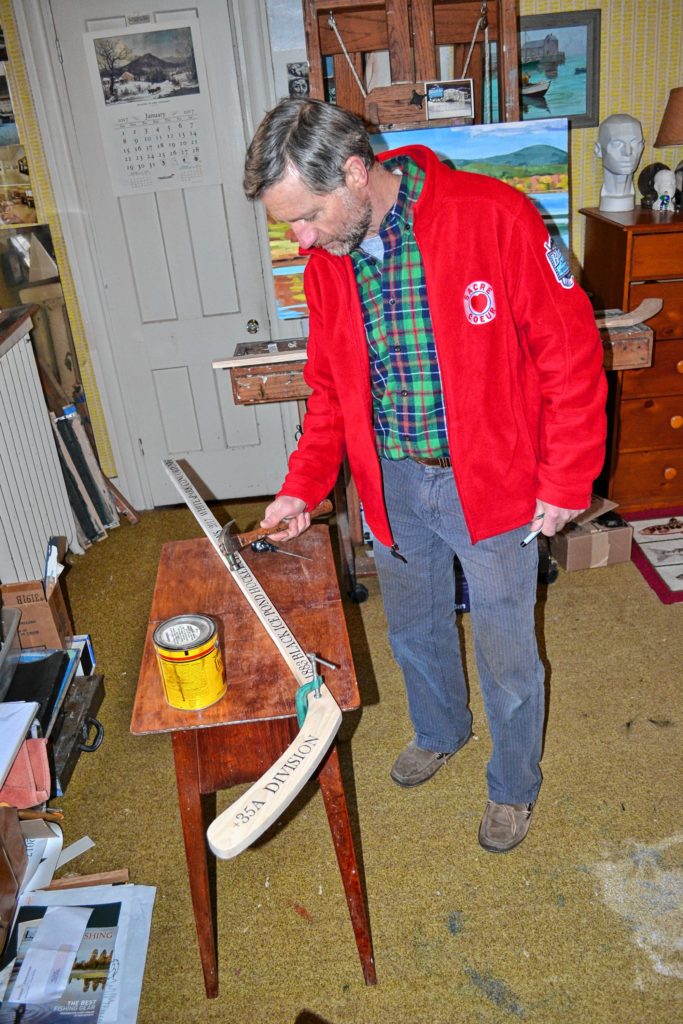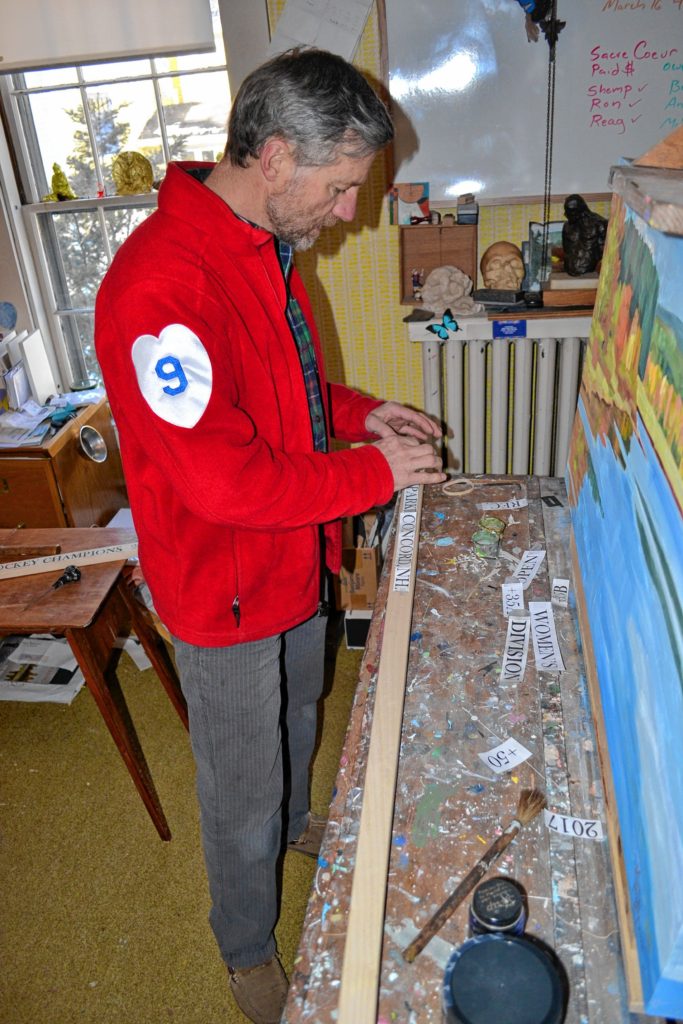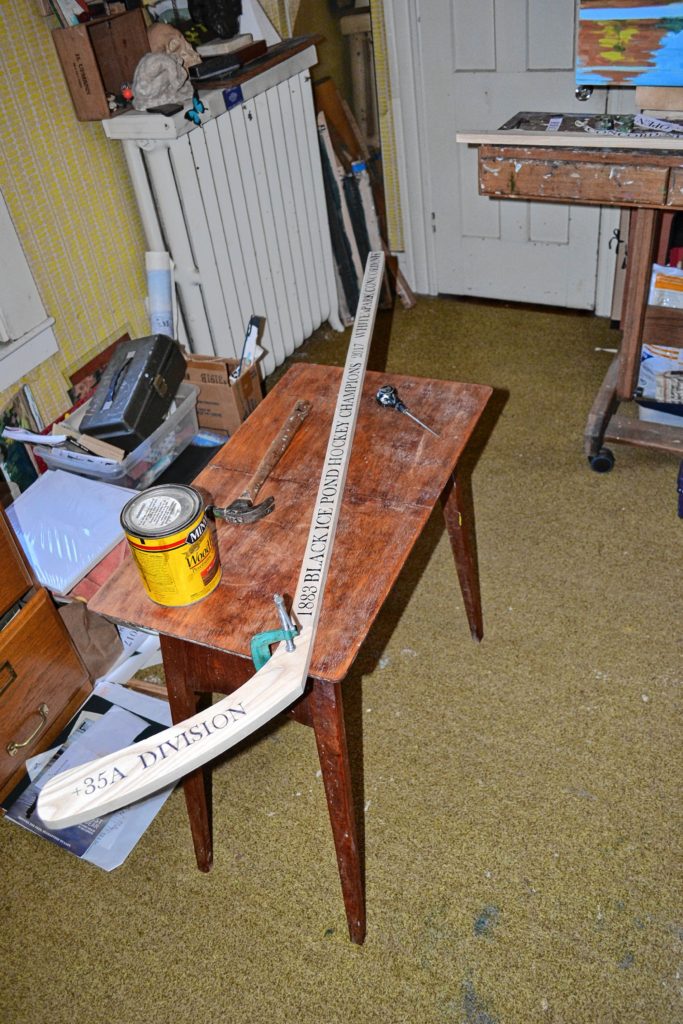Like most tournaments, the teams who takes on all comers in their division in the Black Ice Pond Hockey Championships are rewarded with some hardware.
But this isn’t some boring plaque or trophy – the winners of the seven Black Ice divisions are given a Hobey Stick. Named, of course, for the hockey legend from St. Paul’s School, Hobey Baker.
Sure trophies are nice to display and polish when company comes over, but this is a pond hockey tournament, and can you really think of a better prize than a stick showing off your team’s dominance? We didn’t think so.
We’ve seen the sticks before, but we were always curious where they came from. So we decided to poke around and see what we could find.
It turns out these aren’t just any old blank sticks taken off a hockey equipment store shelf. The sticks are made each year by WS Dennison Cabinets in Pembroke out of ash, which is a good, strong wood.
“They make baseball bats out of it, so it’s got to be strong,” owner George Dennison said.
WS Dennison is in the business of making cabinets, but they make an exception for the Black Ice tourney. In about five or six hours, they can whip up all seven standard-length sticks, along with a dozen or so smaller ones given to sponsors.
The sticks are two parts – the shaft and the blade – and everything is cut to the proper size using a table saw.
“Usually we do them out of scraps, whatever we have hanging around,” Dennison said.
All edges are sanded, and from there, Mark Ruddy takes over.
To give them that personal touch, Ruddy hand-letters each stick. He’s done it since the very first tournament, when he was part of the group that came up with the idea for the whole thing.
“I’m sort of the art end of the committee,” Ruddy said.
First he types it out in the correct font (an old-fashioned one he picked many years ago) and size so it all fits on the stick.
He prints and cuts out the words, but before taping them to the stick, he goes over the back of each letter with graphite.
Then he traces the letters with a hard lead pencil, which gives each word a faint outline on the stick. He then uses a Sharpie pen for the final look. The blade is lettered with the name of the division.
Sounds like a pretty extensive process if you ask us.
Before staining them and adding a coat of wax. Ruddy gives it a little character.
“I just whack them (with a small hammer) to make some marks, a little sand paper here and there,” Ruddy said. “I beat them up a bit because we try to make them look vintage and old.”
Each stick takes about eight or nine hours.
“It’s time-consuming and tedious, but it’s fun,” said Ruddy. “It’s a labor of love.”
And if you want to see who takes home this year’s sticks, you’ll have check out the finals on Sunday.











